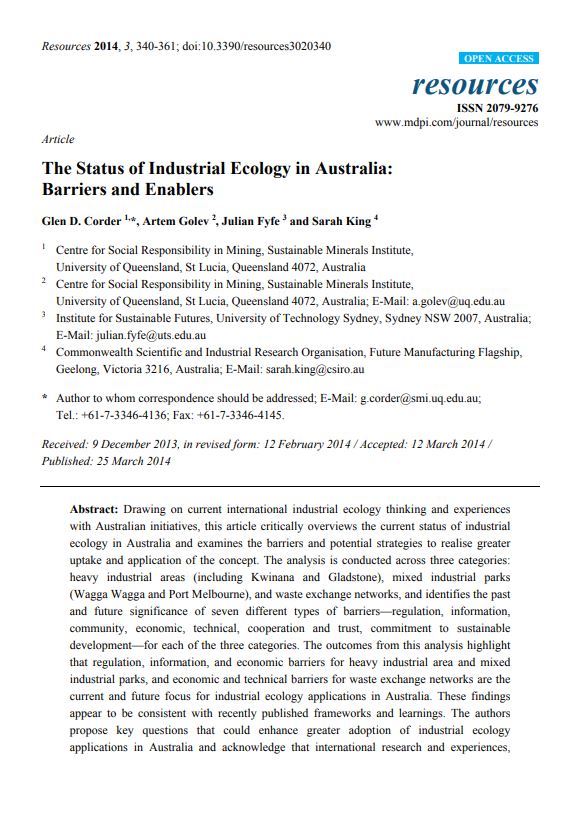The status of industrial ecology in Australia: barriers and enablers
Drawing on current international industrial ecology thinking and experiences with Australian initiatives, this article critically overviews the current status of industrial ecology in Australia and examines the barriers and potential strategies to realise greater uptake and application of the concept. The analysis is conducted across three categories: heavy industrial areas (including Kwinana and Gladstone), mixed industrial parks (Wagga Wagga and Port Melbourne), and waste exchange networks, and identifies the past and future significance of seven different types of barriers—regulation, information, community, economic, technical, cooperation and trust, commitment to sustainable development—for each of the three categories. The outcomes from this analysis highlight that regulation, information, and economic barriers for heavy industrial area and mixed industrial parks, and economic and technical barriers for waste exchange networks are the current and future focus for industrial ecology applications in Australia. These findings appear to be consistent with recently published frameworks and learnings. The authors propose key questions that could enhance greater adoption of industrial ecology applications in Australia and acknowledge that international research and experiences, while partly providing answers to these questions, need to be adapted and refined for the Australian context.
Publisher: REsources
Region: Australia
Type: Research Paper
CITATION
Corder, Glen D., Golev, Artem, Fyfe, Julian and King, Sarah (2014). The status of industrial ecology in Australia: barriers and enablers. Resources 3 (2) 340-361

